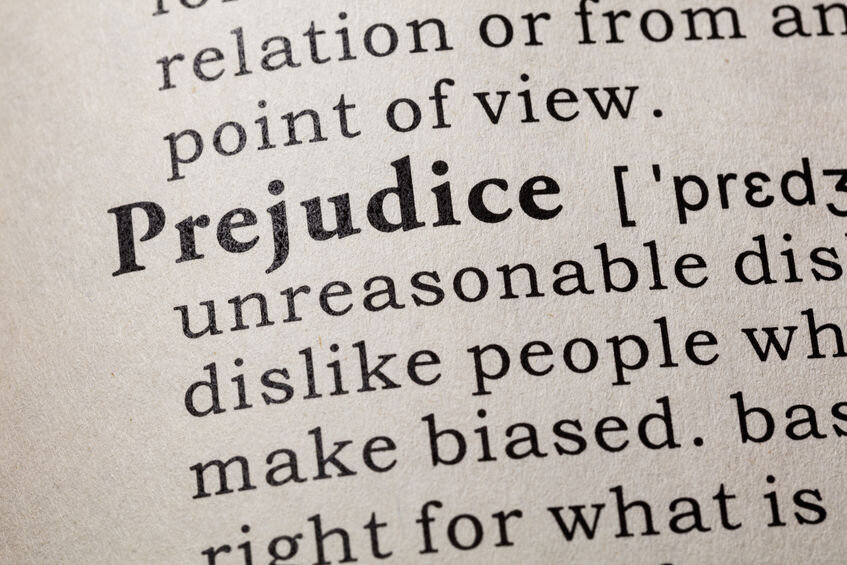[ad_1]

I have received several questions from readers recently on the psychology of prejudice. Where does it come from? Why are racism, sexism, homophobia, and other forms of bias so common? And why do these things seem so difficult to change? I taught college courses in this area for several years, and here are some of the main theories I covered. Note that theories on prejudice have changed significantly over the last century, so we’ll also explore how they have evolved during that time.
In the 1930s and 40s, psychologists took a psychodynamic view on prejudice and attempted to explain it in very Freudian terms. The basic idea was that prejudice stemmed from authoritative parenting styles and that children respond to this situation by projecting the anger that they have at their parents onto outgroups instead. Research has never really substantiated this theory, though, so it’s not considered to be a compelling explanation today and I don’t think it’s really worth diving into much further.
In the 1950s, we saw researchers begin to take a personality approach to studying prejudice. The main idea was that some people just have “prejudiced personalities.” This view arose out of the events of World War II and the Holocaust. Psychologists wanted to understand why and how the Nazis committed the atrocities that they did. This led to the development of authoritarian personality theory, which is characterized by unquestioning obedience toward, respect for, and submission to authority figures.
This type of personality is thought to develop during adolescence and, like psychoanalytic theory, has a lot to do with the way people are raised—basically, it develops through trained obedience to authority. This willingness to submit to authority is really seen as what underlies prejudice and discrimination—these people are basically just doing as they are told, even if that means being aggressive toward other groups.
While people tend to think of personality traits like this as being pretty stable over the lifespan, I actually conducted some research in graduate school finding that authoritarian tendencies can shift in response to changes in the social context. For example, they increase to some degree during wartime periods when people perceive significant social threats [1].
The personality approach to understanding prejudice is one that remains popular to this day, both inside and out of the field, and authoritarian personality theory in particular has seen renewed interest with the rise of authoritarian politicians around the world.
In the 1960s and 70s, many researchers started taking a socio-cultural approach to prejudice, looking at the roles that culture, society, norms, and group memberships play. For example, some of these researchers attempted to explain prejudice through the lens of group competition over resources.
This is where the classic Robber’s Cave experiment emerged, which you probably learned about if you ever took an introductory psychology course [2]. Researchers took two groups of kids to a summer camp. They separately bonded and formed group identities, and then the researchers put the groups into competition with one another for trophies and awards. They found that a vicious rivalry emerged very quickly. There was name-calling and aggression—the kids even burned each other’s team flags.
The researchers found that they could reduce conflict and tension by getting the kids to work together on achieving common goals. For example, when the food and water supply to the camp was threatened, everyone had to come together to find a solution—and in the process, cross-group friendships formed and the rivalry dissipated.
The main idea stemming from this study is that prejudice and bias stem from the fact that social groups are in competition for resources all of the time and that this is what ultimately underlies conflict; however, the key to resolving prejudice has a lot to do with finding shared identities and coming together to work on common goals.
More recent approaches to understanding the origins of prejudice have taken a social cognitive approach, with some looking to implicit biases, or the non-conscious processes that might underlie prejudice. The idea here is that people can be prejudiced without even consciously knowing or recognizing that they’re acting in a discriminatory way.
This led to the development of the Implicit Association Test (IAT), which purportedly measures the non-conscious, automatic associations we have have with different social groups. Specifically, the IAT looks at how quickly and consistently people associate positive and negative words with different social categories, such as Black/White, men/women, gay/straight, etc.
However, the study of implicit bias is something that has proved quite controversial and researchers can’t quite agree on what the IAT actually measures: does it truly capture this concept of implicit bias, or does it just tap into knowledge or awareness of cultural stereotypes? The effectiveness of implicit bias trainings have also been hotly debated. Learn more about the IAT and the controversy surrounding it here.
Other researchers have taken a different social-cognitive approach, looking at the human tendency to be efficient processors of information—we look at the world around us, try to determine patterns, and make judgments and decisions based on those patterns. Many argue that the human mind evolved to work like this and that it’s an adaptive tendency for making sense of and navigating the world.
From this view, the tendency to stereotype (i.e., to make broad generalizations based on limited information) is seen as an ingrained tendency, which may help to explain why it’s so hard to change. In other words, we’re fighting against the way our minds evolved to work. To be clear, this view doesn’t attempt to justify or rationalize harmful group stereotypes—it’s just another attempt to explain their origins, with the idea being that if we want to change things, we need to understand where they come from in the first place.
As you can see, there are myriad views on the psychology of prejudice. Admittedly, this is a very cursory overview and there are even more perspectives than I had time to get into in this post.
Psychologists today don’t agree on just one of these theories or views, either. Different researchers argue for different perspectives, and some of them remain quite controversial.
What do you think? Which views or perspectives are most compelling to you and why? Discuss below.
Want to learn more about Sex and Psychology ? Click here for previous articles or follow the blog on Facebook (facebook.com/psychologyofsex), Twitter (@JustinLehmiller), or Reddit (reddit.com/r/psychologyofsex) to receive updates. You can also follow Dr. Lehmiller on YouTube and Instagram.
[1] Lehmiller, J. J., & Schmitt, M. T. (2008). Intergroup attitudes and values in response to the US invasion of Iraq. Peace and Conflict: Journal of Peace Psychology, 14(3), 259-274.
[2] Lehmiller, J. J. (2007). Robber’s Cave experiment. In R. Baumeister & K. D. Vohs (Eds.), Encyclopedia of Social Psychology (pp. 761-762). Thousand Oaks, CA: Sage.
Image Source: 123RF/Feng Yu
You Might Also Like:
-
Are Homophobic People Repressing Their Own Same-Sex Desires?
-
The Link Between Homophobia and Insomnia and Why It Matters For LGB Health
[ad_2]
Article link
[recent_products limit=”4″ orderby=”rand”]



